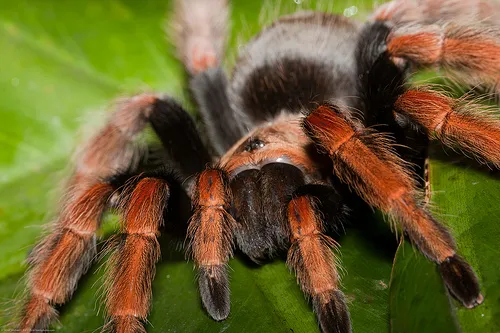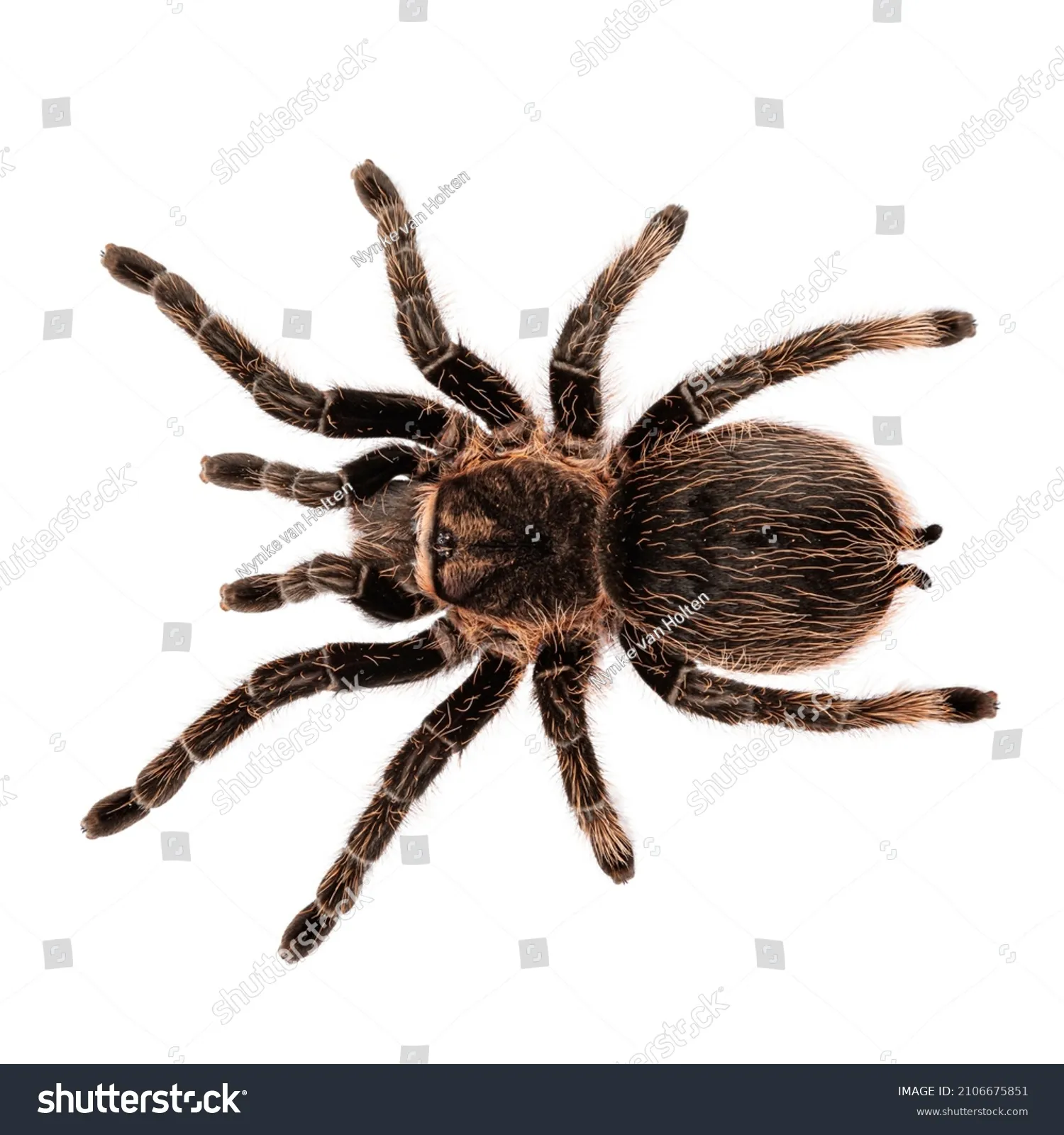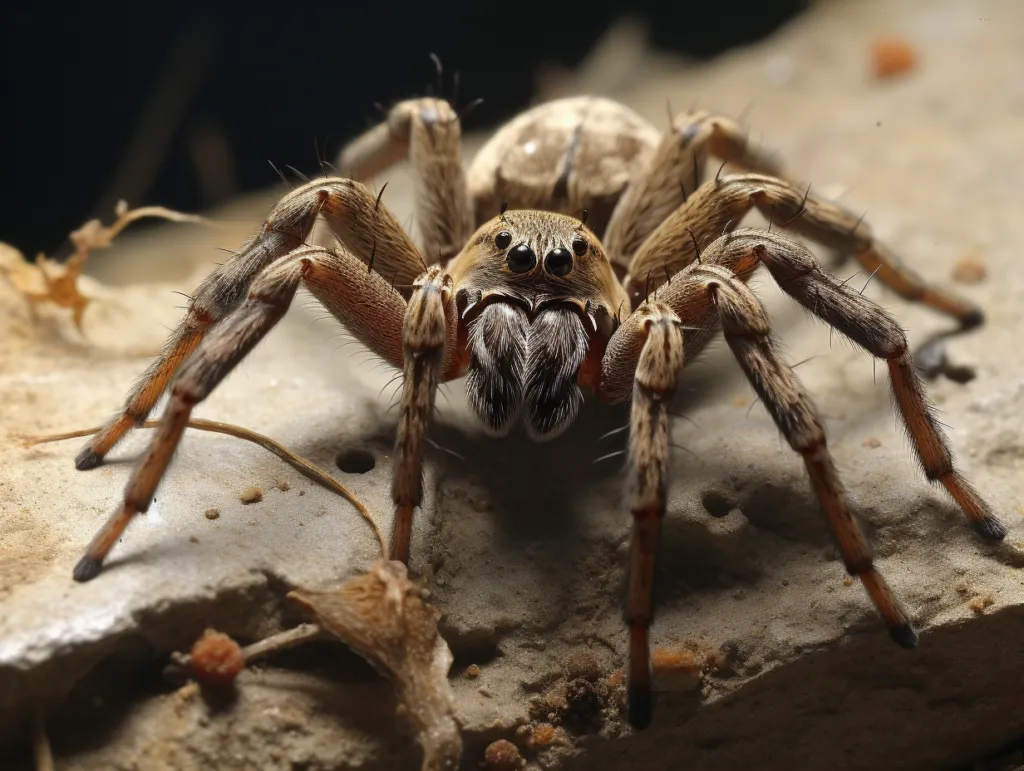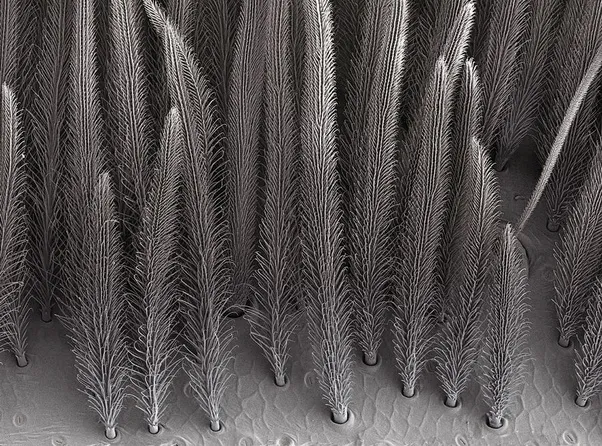What Are Urticating Hairs?
Tarantulas, despite their fearsome reputation, possess a unique defense mechanism: urticating hairs. These aren’t just any ordinary hairs; they’re specialized structures, typically located on the abdomen of New World tarantulas. These hairs are barbed and designed to irritate the skin, eyes, and respiratory system of potential predators. They are a crucial part of the tarantula’s survival strategy, providing a non-lethal way to deter threats. The term “urticating” comes from the Latin word “urtica,” meaning nettle, a plant known for its stinging properties. These hairs are a potent irritant, and their impact can range from mild discomfort to more severe reactions, depending on the exposure and the individual’s sensitivity. It is critical to understand the nature of these hairs to safely interact with or care for these arachnids.
How Do Tarantulas Use Their Hairs?
Tarantulas deploy their urticating hairs primarily as a defense mechanism. When threatened, particularly by potential predators, they use their hind legs to flick these hairs towards the perceived threat. This behavior, known as “hair-flicking” or “bombardment,” is remarkably accurate and effective. The hairs are dispersed in a cloud, targeting the eyes, skin, and mucous membranes of the attacker. The tarantula’s ability to precisely aim these hairs is a testament to its evolved defense strategies. The density and type of urticating hairs vary among different species, influencing their potency and the level of irritation they cause. Understanding this defensive behavior is key to avoiding accidental exposure and ensuring safe handling practices.
The Mechanism of Irritation

The irritation caused by urticating hairs is a result of both mechanical and chemical factors. The barbed nature of the hairs allows them to embed themselves into the skin or mucous membranes, causing physical irritation. This embedding process makes it difficult to remove the hairs, prolonging the discomfort. Moreover, the hairs contain chemical compounds that further exacerbate the irritation. These chemicals trigger an inflammatory response, leading to itching, redness, and swelling. The severity of the reaction depends on factors such as the density of hair exposure, the sensitivity of the individual, and the specific type of tarantula. Prolonged or repeated exposure can lead to more pronounced and persistent symptoms, making the understanding of this mechanism crucial for both pet owners and researchers.
Can Tarantula Hairs Cause Blindness?
While the idea of tarantula hairs causing blindness is a common concern, the risk is generally low but not entirely impossible. The primary danger to the eyes comes from direct exposure to the urticating hairs. If these hairs enter the eyes, they can cause significant irritation, leading to corneal abrasions or other injuries. However, complete blindness is rare. More commonly, exposure leads to temporary discomfort, such as redness, watering, and a feeling of something being in the eye. The severity of the reaction depends on how much exposure occurs and how quickly the affected person seeks treatment. Proper and immediate rinsing of the eyes is crucial in minimizing potential damage. Understanding the symptoms and the correct course of action is key to managing eye exposure and preventing serious complications.
Symptoms of Eye Irritation
When urticating hairs come into contact with the eyes, several symptoms can occur. The most immediate reaction is often intense itching and a burning sensation. The eyes may become red and watery as the body attempts to flush out the irritants. Some individuals may experience a feeling of grittiness, as if sand or debris is trapped in the eye. Swelling around the eyelids is also common. In more severe cases, individuals may report blurred vision or light sensitivity. It’s important to note that these symptoms can vary in intensity depending on the amount of exposure and individual sensitivity. Any time the eyes are exposed to these hairs, swift and appropriate action should be taken to relieve discomfort and prevent further harm.
First Aid for Eye Exposure

If tarantula hairs get into your eyes, immediate action is crucial. The first step is to flush the eye thoroughly with copious amounts of clean water or saline solution. Gently rinse the eye for at least 15-20 minutes, making sure to remove any visible hairs. Avoid rubbing the eye, as this can cause further irritation and potential damage to the cornea. After rinsing, it’s advisable to seek medical attention, particularly if symptoms are severe or persistent. A healthcare professional can examine the eye for any embedded hairs or corneal damage and provide appropriate treatment. They may prescribe lubricating eye drops to soothe irritation or, in some cases, an antibiotic to prevent infection. Prompt action minimizes the risk of serious complications and promotes quicker recovery.
Long-Term Effects and Complications
While the immediate effects of tarantula hair exposure are usually temporary, there can be long-term complications, especially if the hairs are not removed properly or if the irritation is severe. Repeated exposure can lead to chronic inflammation and persistent discomfort. Corneal abrasions, if left untreated, can cause scarring and potentially affect vision. In rare cases, infections can develop, further complicating the situation. It’s essential to seek medical attention promptly to assess and treat any lasting damage. Regular follow-up with an ophthalmologist may be necessary to monitor and manage any ongoing issues. Proper care and prevention are key to minimizing the risk of long-term complications and maintaining good eye health.
Preventing Exposure to Tarantula Hairs
Preventing exposure to urticating hairs is the best way to avoid eye irritation or other potential problems. When handling tarantulas, always wear appropriate personal protective equipment (PPE), including safety glasses or goggles to protect the eyes. Keep a safe distance from the tarantula, especially when it appears agitated or defensive. Avoid sudden movements or actions that might startle the spider and trigger a defensive response. Make sure the tarantula’s enclosure is properly secured to prevent escape and reduce the risk of accidental exposure. Regularly cleaning and maintaining the enclosure can also minimize the buildup of shed hairs and reduce the chance of airborne exposure. Proper precautions are key to safe tarantula ownership.
Handling Tarantulas Safely

Safe handling practices are crucial for minimizing exposure to urticating hairs. Always handle tarantulas over a soft surface, like a bed or a large container, to prevent injury if the spider falls. Use tools like long tongs or a soft brush to gently guide the tarantula if necessary, minimizing direct contact. Avoid touching the abdomen, where the urticating hairs are located. Wash hands thoroughly after handling, even if you were wearing gloves. Be mindful of the tarantula’s behavior; if it appears defensive, retreat and avoid handling it. Proper training and experience are vital; if you are new to tarantula ownership, it’s best to start with species known for being less defensive and to seek guidance from experienced keepers. Regular inspections of the enclosure can help identify potential hazards and inform safer practices.
Choosing the Right Enclosure
The type of enclosure plays an important role in both the well-being of the tarantula and the safety of its keeper. Choose an enclosure that is appropriately sized for the species and age of the tarantula. The enclosure should have a secure lid to prevent escape and accidental exposure to urticating hairs. Proper ventilation is crucial to prevent the buildup of humidity and potential health problems. The substrate should be suitable for the species, and it should be regularly cleaned to minimize the accumulation of shed hairs. Ensure that the enclosure provides a comfortable and stimulating environment for the tarantula, reducing stress and the likelihood of defensive behavior. A well-designed enclosure is a fundamental aspect of responsible tarantula ownership.
The Role of Species in Hair Irritation
Not all tarantula species are created equal when it comes to their urticating hairs. The potency and the method of hair-flicking vary significantly among different species. Some tarantulas have hairs that are more irritating than others. Some New World tarantulas, for example, have hairs that are more likely to cause skin and eye irritation. Some species are known for being more prone to flicking their hairs as a defense. Researching the specific species you are considering keeping is vital to understanding the potential risks. Understanding the specific characteristics of a species can help you to prepare for potential issues and to take extra precautions. This knowledge informs safer practices and promotes a more informed approach to tarantula ownership.
Comparing Different Tarantula Species

When choosing a tarantula, comparing different species is essential. Consider factors such as temperament, size, and the potency of their urticating hairs. Some species are known for being more docile and less prone to hair-flicking, making them potentially better choices for beginners. Others have more potent hairs, requiring extra caution. Research the specific requirements of each species, including their preferred habitat, diet, and level of care. Examine online resources and connect with experienced tarantula keepers to gather information. By comparing and contrasting the various species, you can make an informed decision based on your experience level, available resources, and the level of risk you are comfortable managing.
Myths and Misconceptions
There are several myths and misconceptions surrounding tarantula hairs. One common misconception is that all tarantulas have equally potent hairs, but this is not the case. Another myth is that blindness is a certain outcome if the hairs enter the eyes, when the reality is that it is rare. Many people also believe that tarantula bites are always deadly, but this is also false. It’s important to separate fact from fiction to develop a realistic understanding of tarantula behavior and risks. Dispel these myths and focus on established facts to minimize anxieties. Accurate information and a cautious approach are the foundations of responsible tarantula ownership.
Debunking Common Myths
Debunking myths is vital to promoting a safe and accurate understanding of tarantulas. One major myth is that all tarantulas are aggressive. In reality, most tarantulas are docile and defensive, preferring to flee than to attack. The myth of highly venomous bites is largely overblown, as tarantula venom is generally not life-threatening to humans. Debunking these myths allows you to appreciate the reality of tarantula behavior and needs. Rely on expert advice, scientific studies, and reputable sources of information to build a well-rounded and evidence-based understanding. Separating fact from fiction is paramount to responsible tarantula ownership and safe interaction.
Expert Advice and Recommendations

If you are considering keeping a tarantula, seek expert advice. Consult with experienced tarantula keepers, veterinarians specializing in exotic animals, or reputable online resources. They can offer guidance on species selection, safe handling practices, and enclosure setup. Always prioritize safety by wearing appropriate PPE when handling tarantulas. Research the specific species you are considering to understand its unique characteristics and potential risks. If you experience any eye irritation or other symptoms after exposure to urticating hairs, seek medical attention immediately. By combining responsible practices with expert advice, you can enjoy the fascinating world of tarantulas while minimizing potential risks and ensuring your well-being and the tarantula’s welfare.
